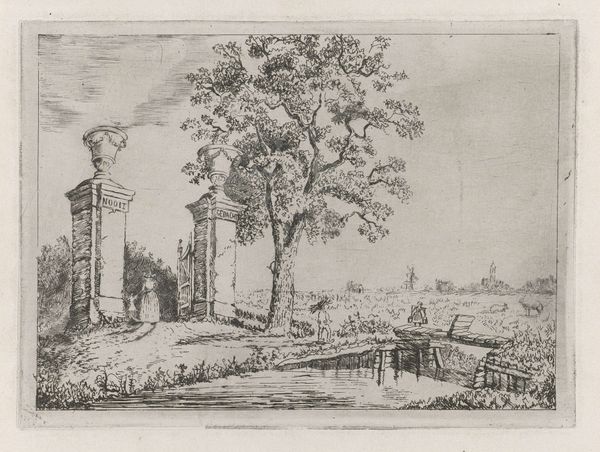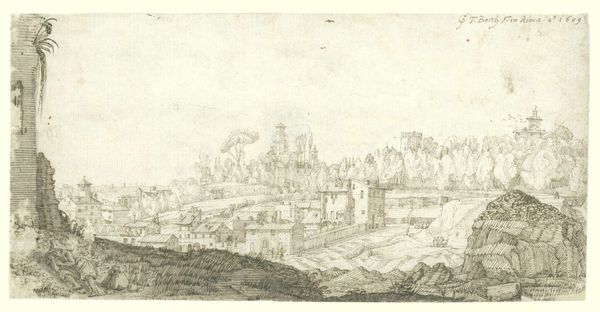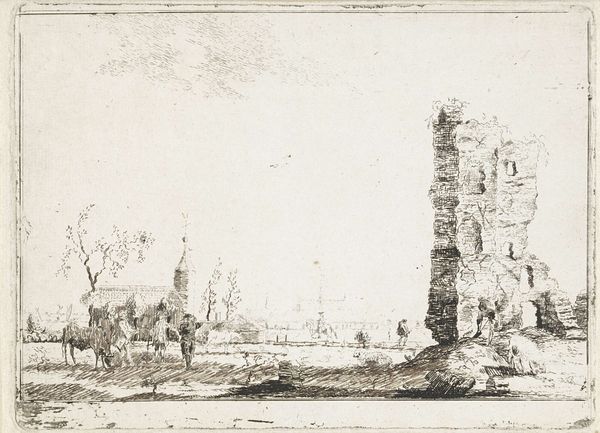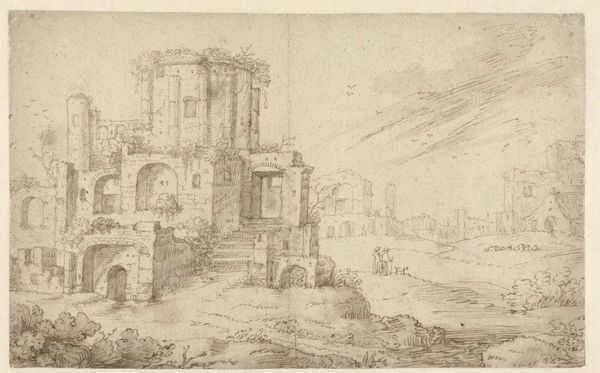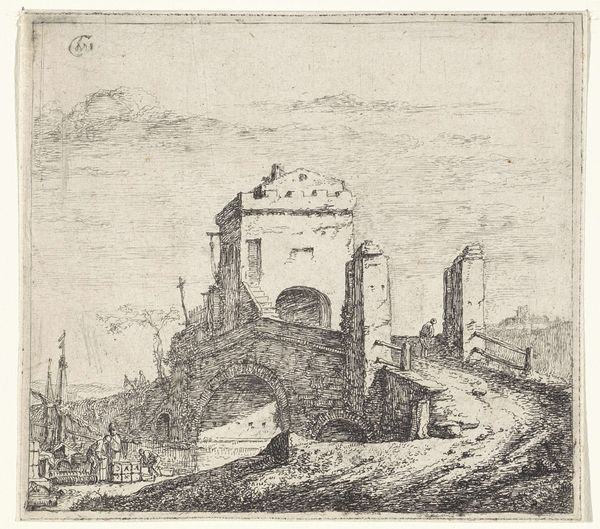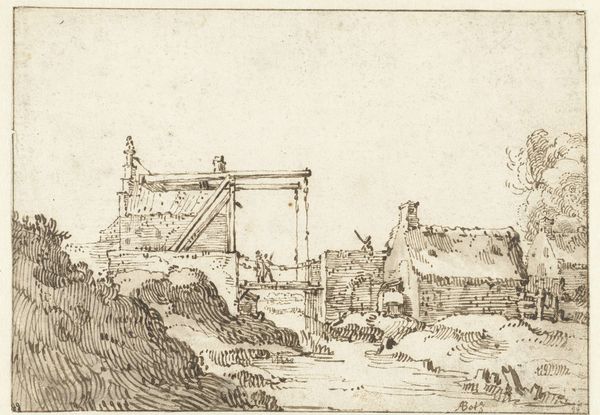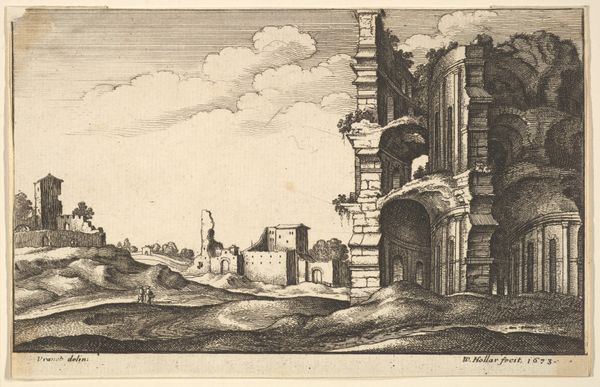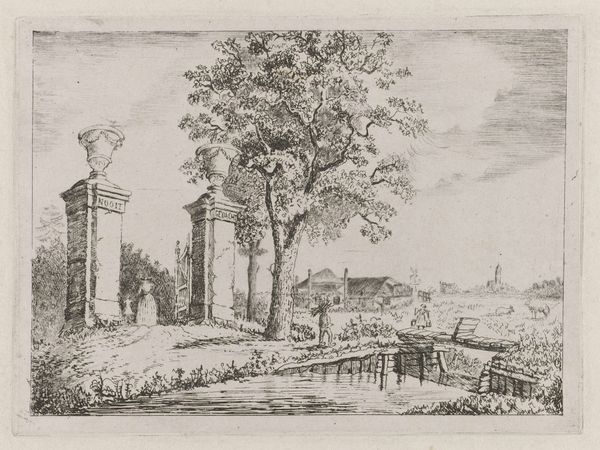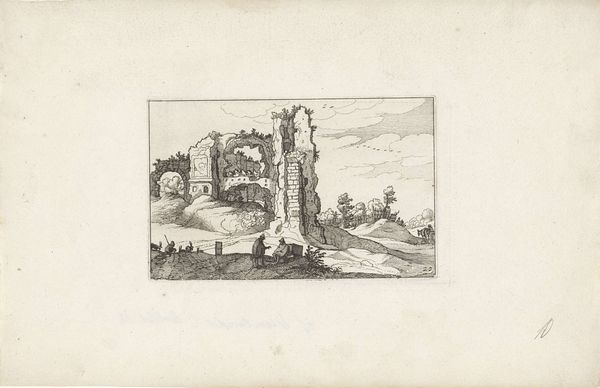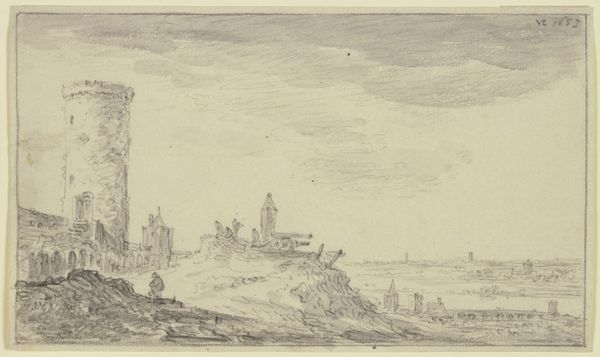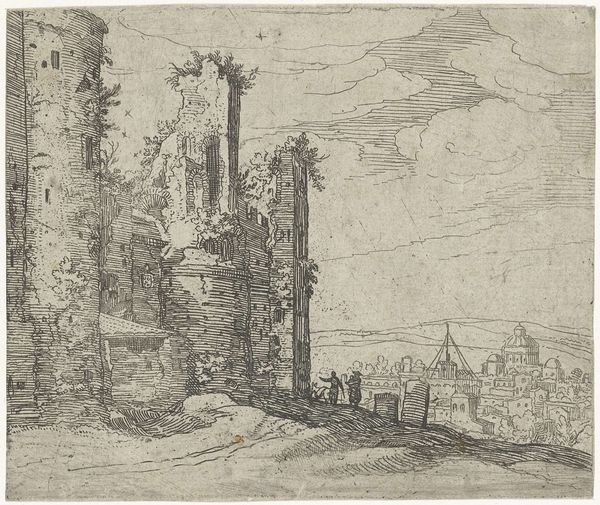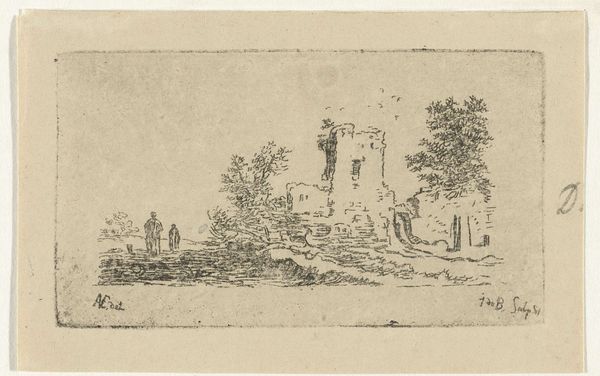
drawing, paper, ink
#
drawing
#
landscape
#
paper
#
romanesque
#
ink
#
cityscape
#
history-painting
Dimensions: height 186 mm, width 278 mm
Copyright: Rijks Museum: Open Domain
Curator: Here we have Harmen ter Borch's rendering, completed before 1677, titled "Ruïnes van de Campo Vaccino in het Forum Romanum." It's held here at the Rijksmuseum. What are your initial thoughts? Editor: Stark, yet tranquil. The sepia tones lend an almost dreamlike quality to the crumbling architecture. The composition, though, is strikingly balanced—a sort of controlled decay. Curator: Absolutely. The use of ink on paper underscores the accessibility of landscape drawings and their function within an artist's broader practice. How Ter Borch negotiated the marketplace for materials is worth considering; his ink, paper, and time. Editor: True, but consider the rendering itself. Notice how the artist captures the play of light and shadow across the ruined structures. There’s a sophisticated handling of perspective, creating depth and drawing the eye into the historical heart of the Roman Forum. The semiotic weight of the decaying structures speaks of time's passage and the transience of power. Curator: I agree. These ruins weren't just aesthetic objects but carried real social significance for seventeenth-century viewers. Remember the Grand Tour, where visiting such sites and collecting artwork documenting them signified class and afforded the opportunity to take these symbols of prestige home, a reflection of expanding networks of trade and aristocratic control. Editor: I’m compelled by the column as a structural motif: its lines draw the eye upwards, yet its brokenness suggests a narrative. It prompts us to question: what forces brought about its demise? The interplay between verticality and fragmentation establishes a dynamic tension, almost architectural poetry. Curator: And this wasn't simple representation; these artists selected viewpoints to shape political discourse, carefully omitting signs of current life and emphasizing the decline of the old empire. The labor of creation also reflects the colonial and cultural aspirations of that time. Editor: Yes, these structural contrasts contribute to the drawing’s lasting impact. Through Ter Borch's artistic processing, we grasp both historical presence and human impact. Curator: Looking at these processes informs my views, while seeing structure deepens yours. It highlights diverse facets of this cityscape—from historical context to the aesthetic mastery apparent in Ter Borch’s approach.
Comments
No comments
Be the first to comment and join the conversation on the ultimate creative platform.
